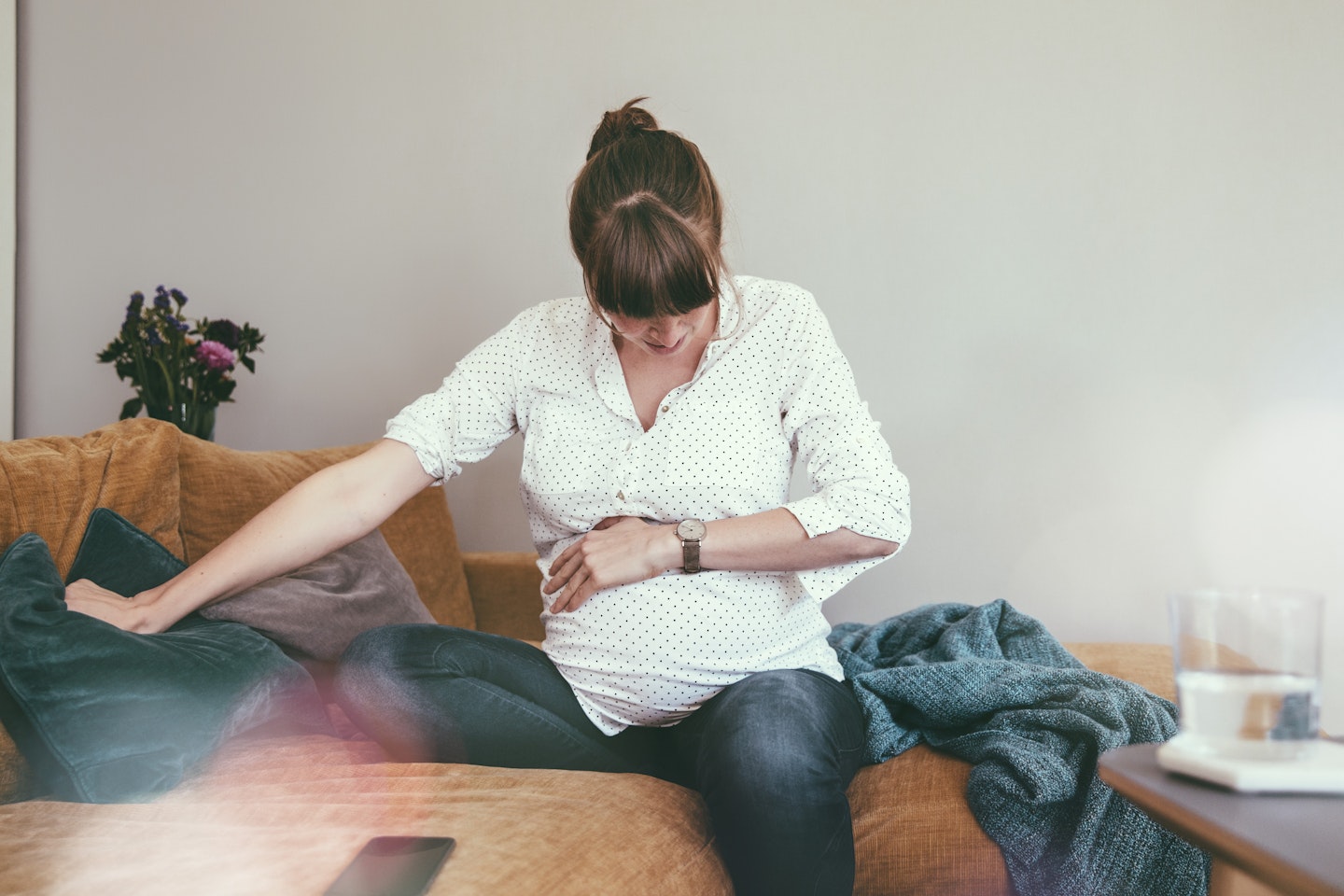
Medically Reviewed by: Lesley Gilchrist
If you're past your due date you might have been offered a membrane sweep. While you'd be forgiven for thinking it sounds like some sort of pregnancy-induced cleaning practice involving a broom, nothing could be further from the truth - a sweep doesn't involve any kind of instrument whatsoever, let alone a broom. But it may well bring you one step closer to labour and giving birth. Here's what really goes on when you have a sweep.
What is a pregnancy sweep or 'stretch and sweep'?
A membrane sweep, also known as a 'pregnancy sweep' or 'stretch and sweep' is when a midwife tries to separate the membranes of the amniotic sac from the cervix, which causes the body to release the hormones that kick off labour, thin the cervix and encourage your baby to be born. The 'stretch' part refers to the gentle widening of the inner part of the cervix using two fingers. This can stimulate labour but won't be performed if your cervix isn't ready to be widened.

Why would I need a pregnancy sweep?
If your baby’s overdue, for instance if you're 41 weeks pregnant and there’s no sign of you going into labour, your midwife might suggest a sweep. Most sweeps are offered between 39-41 weeks, and are generally performed before you reach 42 weeks pregnant. It’s a natural way to try and get labour going, before they start thinking about whether you might need to be induced for labour to begin, which involves artificial hormones. But remember you're not alone; according to the NCT advice on what to do if your baby is overdue, full term pregnancy is anywhere between 37-42 weeks so plenty of mothers have to wait beyond their due date to finally meet their baby.

What happens during a membrane sweep?
According to the NHS, the aim of a membrane or pregnancy sweep is to "separate the membranes of the amniotic sac surrounding your baby from your cervix. This separation releases hormones (prostaglandins), which may start your labour". Lesley Gilchrist, midwife and founder of My Expert Midwife explains what you can expect when you have a membrane sweep.
"Your midwife or doctor will fully explain the procedure beforehand and ask for your permission to go ahead with the membrane sweep. A membrane sweep can be done in the GP or hospital clinic, the hospital ward or in your own home. You will be asked to remove your lower clothing and underwear and to lie down on a bed, exam table or sofa. Your midwife or doctor will then insert two gloved fingers into your vagina towards your cervix to gently stretch your cervix open and sweep the membranes surrounding your baby to separate them from your cervix. In total, the procedure takes just a few minutes."
If the midwife can’t reach the amniotic sac, they may be able to stretch and massage the cervix, ripening or softening it so they can successfully do the procedure a few days later to try and stimulate labour.
Is a sweep the same as being induced?
A pregnancy sweep is often offered before induction as it can be an effective way of starting labour without the need for pessaries or hormones. If labour doesn't start you might be offered another sweep or the doctor might discuss induction options with you. There are also some natural ways to induce labour, though they should only be a helping hand and gentle enough that you won’t go into labour if your body isn’t ready.
How painful is a sweep?
Many women find the procedure uncomfortable, but not especially painful. Lesley notes that "you may notice a small amount of bleeding and some cramping afterwards, which is normal, but your midwife or doctor will advise you of this and what to do." It helps to keep in mind the purpose of the sweep. If you’re overdue, you’re likely to feel pretty fed up about being pregnant and keen to meet your baby, so hang on to that thought while it’s being done.
How effective is a pregnancy sweep?
A study in the Journal of Clinical Gynaecology and Obstetrics found that "most of the women who underwent membrane sweeping entered spontaneous labour" and concluded that "sweeping of the membranes at term is safe and reduces the incidence of post-date gestation. Most women required only a single cervical sweeping." Midwife expert, Lesley agrees, saying "Most membrane sweeps work within 48 hours and most women only need one or two."
How will I know if it's worked?
The signs of a successful membrane sweep include starting to feel period-like pains within 48 hours of the sweep. Lesley suggests that "you may notice cramping to begin with, and then contractions which begin to become more frequent over the next few hours." While pain isn't normally something to look forward to, in this case it can be a positive sign after a membrane sweep that it’s likely to have worked and labour is starting. With any luck your contractions will start but don't worry if nothing happens during that time. If there's no movement then you may be offered another one the next time you visit your midwife. You may be offered up to three sweeps and then an induction will be discussed.

Can you decline a membrane sweep?
Yes, you can. A membrane sweep is offered to bring on labour naturally and to hopefully avoid an induction of labour but your Midwife or Obstetrician will make sure that you fully understand the reason one has been offered to help you make a fully informed choice.
Any advice?
It’s a good idea to wear a sanitary towel just in case as it's possible to have a bloody show after a sweep. While it's best to be prepared, in most cases it’s at least a few hours until anything starts happening if it’s going to so you'll have time to go home and relax. And just in case you were worrying about it, it’s rare for your waters to break during a sweep. Other than that, good luck, and remember that it's bringing you closer to seeing that little baby you've been waiting 9 months to meet!
About the expert
Lesley Gilchrist, BSc (Hons) Midwifery Studies, MSc Clinical Research Methods, is the CEO and founder of 'My Expert Midwife' and has been a midwife since 2003, working in some of the largest teaching hospitals in Europe. Through this time, Lesley has gained invaluable experience and insight into maternity care, labour and birth.
Rebecca Lancaster is a Digital Writer for Mother&Baby, drawing on ten years of parenting her two children to help others navigating their own parenting journey. As a freelance writer, she spent ten years working with leading lifestyle brands, from travel companies to food and drink start-ups, and writing everything from hotel reviews to guides to the best British cheeses. She’s particularly interested in travel and introducing her children to the excitement of visiting new places, trying different foods (less successful) and experiencing different cultures.
